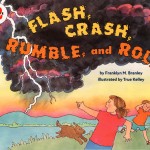
Unemployment, Crowding, and the Future of America
Posted by ludw1086 on Nov 3, 2012 in Blog | Comments Off on Unemployment, Crowding, and the Future of AmericaIn a few days, the United States will select either Barack Obama or Mitt Romney as the next President. It will be incredibly important for the financial markets, for the future growth of the country, and for how to approach regulation. The financial crisis of 2008 was devastating to the American economy. From January 2008 to September 2012, the number of unemployed has increased by 4.6 million. But the population has continued to grow, even though jobs haven’t, so another 9.8 million people aren’t even counted in the unemployment rate. Of those, surveys indicate that 6.1 million are desperate to have a job. If you count these uncounted people, the unemployment rate is really somewhere between 11% and 12%! The October official unemployment number came in at 7.9%, but some groups fared worse than others. The black unemployment rate went from 13.4% to 14.3% from September to October.
Creating jobs is a fickle thing. How do you create jobs? Most of the meaningful jobs are created by the pursuit of new ideas without too many rules or constraints. However, the current framework of the U.S. is one of tight controls and regulation. It starts with the excessive regulations of Dodd-Frank on banks to the exploitation of ordinary citizens by the various organizations finding subtle ways to collect additional tax revenue. The financial crisis of 2008 led many to believe that the best reaction was to impose business-halting regulations. The problem, as I discuss in the Crisis of Crowding, is that many regulations aren’t necessary, are freezing business activity and hiring, and are having unintended consequences. In Crowding, I interview lots of the key bankers and regulators and explain carefully the sequence of events that led to the housing bubble, the failure of Freddie and Fannie, the collapse of Bear Stearns and Lehman Brothers, and the failure of many hedge funds. The book’s main focus is to highlight the mistakes and problems in financial firms, but to appreciate the problems of the 2008 crisis, one must look beyond just the failure of Wall Street firms, or the failure of U.S. banks, one must consider the elements of Greed that were present with politicians, regulators, realtors, mortgage lenders, and even home buyers. It was a crisis created by the players of the game, not by some external event. All of the players were enjoying the game and so the bubble grew until it collapsed in a horrific fashion. Here’s what scary: It may have taken just one rule to stop it…only allowing 20% down, 30-year fixed rate mortgages. Let me stress…just one rule.
The current government, in part, cheered by our ignorance has created hundred of new rules. Many of which aren’t even fully vetted yet. The uncertainty about the rules and the plethora of rules is halting businesses. Just imagine if Beethoven had been put into a room and told that he could write a symphony but without using any violins or clarinets? How might have the 9th symphony sounded? So if we want jobs, we need to let people write symphonies.
Over the last 20 years, we’ve seen lots of crowds that distort the system so that it hurts everyone. Examples include the 1987 crash when the stock market dropped by 21% in a single day, the Long-Term Capital Management Failure of 1998, and the Internet Bubble bursting in 2000, but none had such a serious toll on the entire U.S. economy like the housing bubble of 2008. The main reasons for this were the vast amount of holders and the intensity of leverage. So you might wonder, what are the crowds doing now?
Today, there are several crowded spaces. One is the U.S. Treasury market. Yields on U.S. government bonds are extremely low as the crowd has fled to what is typically accepted as a safe asset for troubled times. Although it’s hard to predict how long these yields will remain low, when they rise they may hurt many ordinary investors that think they are safer than they are. The other crowded place is the student loan market. Everyone is scrambling to get a college education. Some of the knowledge ostensibly gained through a four-year liberal arts education is increasingly mismatched with the skills required for many jobs in today’s economy. It’s also not clear whether all degrees are equal, but the crowd is still rushing in. The debt they incur to pay for this degree is extraordinary. The average debt per student is up to $26,682 and the default rate on student loans has been rising. In some states, around 70% of students have debt burdens, including the battleground election states of Iowa and Ohio with an average student debt of $29,000. Even crowdedfunds are getting into the business, but most student loans are given by the U.S. government and if students eventually can’t pay their debt or stop paying their debt, then what?
We need a framework in America that allows businesses to breath and flourish and even make mistakes. This freedom, rather than fear, will create new jobs. We also need to figure out how to induce private markets to be careful about crowded spaces. Neither candidate will be able to solve all of these problems, but whichever candidate wins, they will have to know that some regulatory changes are needed, but many others are not. And don’t get discouraged if your candidate doesn’t win, just take the afternoon off away from the crowd and read the story of the Crisis of Crowding.
Ludwig B. Chincarini, Ph.D., CFA
Author of the Crisis of Crowding
www.ludwigbc.com






